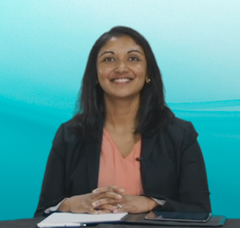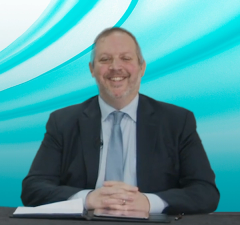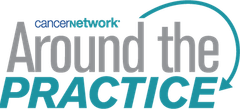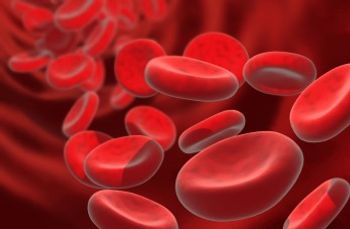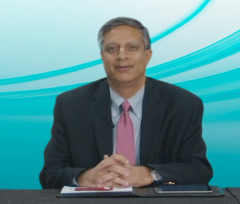
Maintenance Therapy Strategies for Transplant Eligible Multiple Myeloma
Drs Ajay Nooka and Jonathan Kaufman discuss maintenance and consolidation treatment strategies for transplant eligible multiple myeloma.
Episodes in this series

Sagar Lonial, MD: Dr Nooka, when we think about continuous therapy and duration of therapy, how do you balance that? What recommendations do you make to colleagues in the community for patients?
Ajay Nooka, MD: For transplant-eligible patients, historically, what has given us the best benefits is the maintenance to maintain the duration of response. Post-transplant, you attain a response. We started looking for risk-adaptive maintenance based on the risk, a combination maintenance which would keep the disease in remission for a longer time.
There was always this school of thought that we want to use these agents at a later time when the patients relapse. When we looked at our database 10 years ago, we saw that with high-risk patients, from the time they relapse to the time they died was less than a 6-month period. We shouldn’t wait to use these regimens at a later time. After 10 years, I take the same stance: put the best foot forward and use the best agents you have to maintain that response. Because your PFS [progression-free survival] benefit is the biggest benefit that you find in the entire life span of a patient with myeloma.
Bringing that to what we do clinically, the same concept goes for a high-risk patient. You do continuous treatment. After 3 or 4 years of treatment, if the patient has continued to maintain that response, you always have the option of building those drugs to the 1 that potentially can maintain that response. You translate the same thing to the standard-risk patients. Take the example of the IFM 2009 trial. We had seen clearly that when patients get the best induction regimen—the 3 drugs existing at that point—get a transplant, and go on to maintenance, patients get a PFS benefit of 4 years.
We’re still waiting for the results of the DETERMINATION trial, which used continuous maintenance. But a surrogate of what we see in the real-world data is data coming from our institution showing that this benefit can be extended almost double the time that we had seen with the IFM 2009 trial, which limited the duration of maintenance to 1 year. It goes without saying that from our perspective, we continue to give the maintenance continuously until there’s an intolerance to the regimen, a serious adverse event, or the patient is progressing. You continue until either progression or meeting an intolerance.
Sagar Lonial, MD: I’m going to address the last question here to Dr Kaufman to get back to where we are in terms of consolidation and maintenance therapy. You mentioned the GRIFFIN trial as a mirror that we’re using for our induction strategies. One question that often comes up is, if you use daratumumab up front, can you use it in relapse? How does available evidence drive us in terms of maintenance and consolidation with lenalidomide alone or lenalidomide plus something else in terms of what we do?
Jonathan Kaufman, MD: There are 2 studies that have come out looking at all comers, both standard-risk and high-risk patients. They’re randomized studies using combination maintenance therapy. There’s the GRIFFIN study, using a combination of daratumumab and lenalidomide vs lenalidomide, and the FORTE study, which had several randomizations, but it included a randomization of every-other-week carfilzomib plus lenalidomide vs lenalidomide. In the GRIFFIN study, it’s a bit difficult to interpret the data because there wasn’t a second randomization. Those patients who started with daratumumab continue with daratumumab through their maintenance period, and those patients who didn’t have daratumumab didn’t have daratumumab as part of their maintenance.
What we saw in GRIFFIN is that the CR [complete response] rate and the MRD [minimal residual disease]–negativity rate increased over time. We still don’t know if that increase over time was because of what happened in induction or because of what’s happened in ongoing daratumumab use. We have interpreted those data to say for our standard-risk patients to continue lenalidomide as a single agent, in large part because our data are so strong in that patient population. We’ve used daratumumab up front to increase the CR MRD-negativity rate and used the lenalidomide as long-term maintenance therapy.
The FORTE study is looking at the combination of carfilzomib plus lenalidomide. This is very similar to the work we’ve done for the past 10 years. Dr Nooka originally published in 2014, and we published again in the RVd [lenalidomide, bortezomib, dexamethasone] 1000 paper. In our high-risk patients, we’ve used the combination proteasome inhibitor–IMiD [immunomodulatory imide drug] regimen for a long time. In the FORTE study, that approach was confirmed to be effective. We use it only for high-risk patients. They use it for a combination of high-risk and standard risk. With the increased toxicity of 2 years of every-other-week carfilzomib, we’re not ready to make that change in standard risk, but it’s very supportive of our current practice of combination proteasome inhibitor plus IMiD in the high-risk post-transplant setting.
Sagar Lonial, MD: It’s a fluid space. There are lots of changes and ways to use and interpret the data. We have to be cautious about how we make those changes and try to use available evidence. Our group tends to lock the door and not let anybody out until we have consensus. That’s an important step for us, but it’s helped us make an impact on the field.
Thank you. This has been a great discussion.
Transcript edited for clarity.
Newsletter
Stay up to date on recent advances in the multidisciplinary approach to cancer.


